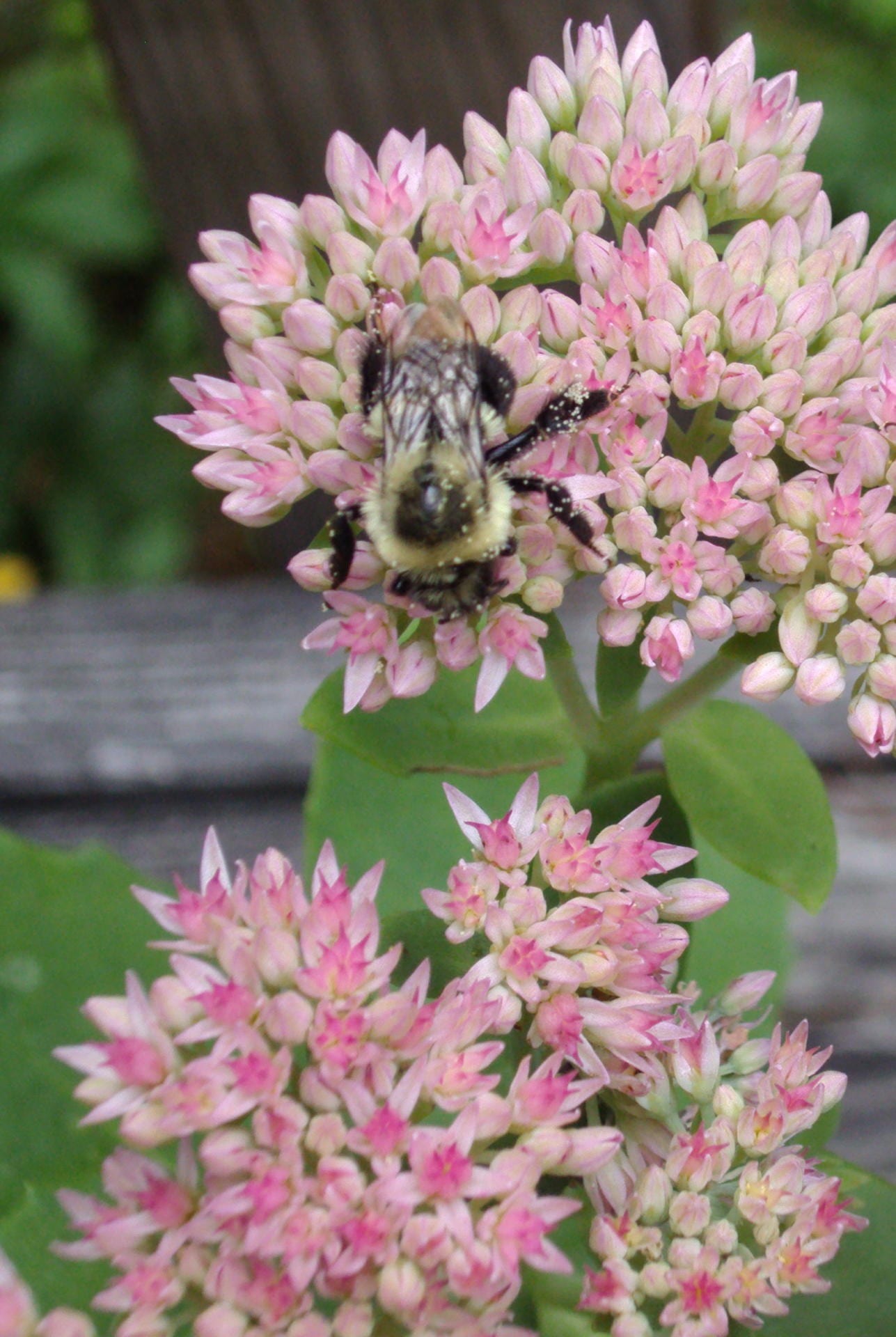by Emily May
Conservation biological control is a science-based pest management strategy that seeks to integrate beneficial insects back into the landscape for natural pest control, ultimately reducing and in some cases eliminating the need for pesticides. Farm landscapes can provide food and shelter for pollinators and other beneficial insects, boosting populations of these insects and the important pollination and pest control services they provide. Healthy, diverse landscapes and the diverse insect populations they sustain help keep pest populations at manageable levels and cut production costs.
 Pollinators and beneficial insects have overlapping ecological requirements: food, nests, and overwintering habitat. Bees, our main pollinators, require a diverse and abundant pollen and nectar supply throughout their flight season to feed their developing larvae. Natural enemies will also benefit from an abundant supply of nectar, as well as the alternative prey species that can flourish in more complex habitats around farms. The diversity and abundance of flowering resources in a landscape is directly tied to the diversity and abundance of bees and many other insects. Planting native wildflowers and flowering trees and shrubs that provide continuous bloom throughout the growing season will help support healthy, diverse pollinator and other beneficial insect communities.
Pollinators and beneficial insects have overlapping ecological requirements: food, nests, and overwintering habitat. Bees, our main pollinators, require a diverse and abundant pollen and nectar supply throughout their flight season to feed their developing larvae. Natural enemies will also benefit from an abundant supply of nectar, as well as the alternative prey species that can flourish in more complex habitats around farms. The diversity and abundance of flowering resources in a landscape is directly tied to the diversity and abundance of bees and many other insects. Planting native wildflowers and flowering trees and shrubs that provide continuous bloom throughout the growing season will help support healthy, diverse pollinator and other beneficial insect communities.
Maintaining healthy beneficial insect communities includes protecting these species from harm, including from the pesticides used for land and farm management. Many different types of insecticides can be toxic to pollinators and other beneficial insects. Some fungicides can also pose risks to bees, both individually or in combination with insecticide use. Herbicide use can remove flowering resources from landscapes, reducing available food sources for pollinators and the beneficial insects that fuel flight and movement with the carbohydrates in nectar. Using preventive pest management strategies that minimize the need for chemical interventions, and protecting existing and future flowering habitat from exposure to pesticides, can help maintain healthier plant and wildlife communities that supply pest control and pollination services.
About the Author
Emily May is a Pollinator Conservation Specialist for the Xerces Society for Invertebrate Conservation. She received an M.S. in Entomology from Michigan State University, and has studied pollinator habitat restoration, bee nesting habits, and the effects of pest management practices on wild bee communities. Her work with Xerces since 2015 has focused on supporting crop pollinators through habitat creation and mitigating pesticide risk to bees and other beneficial insects. She is based in CT and provides technical assistance for pollinator projects in VT, MA, and NH.
***
Each author appearing herein retains original copyright. Right to reproduce or disseminate all material herein, including to Columbia University Library’s CAUSEWAY Project, is otherwise reserved by ELA. Please contact ELA for permission to reprint.
Mention of products is not intended to constitute endorsement. Opinions expressed in this newsletter article do not necessarily represent those of ELA’s directors, staff, or members.

